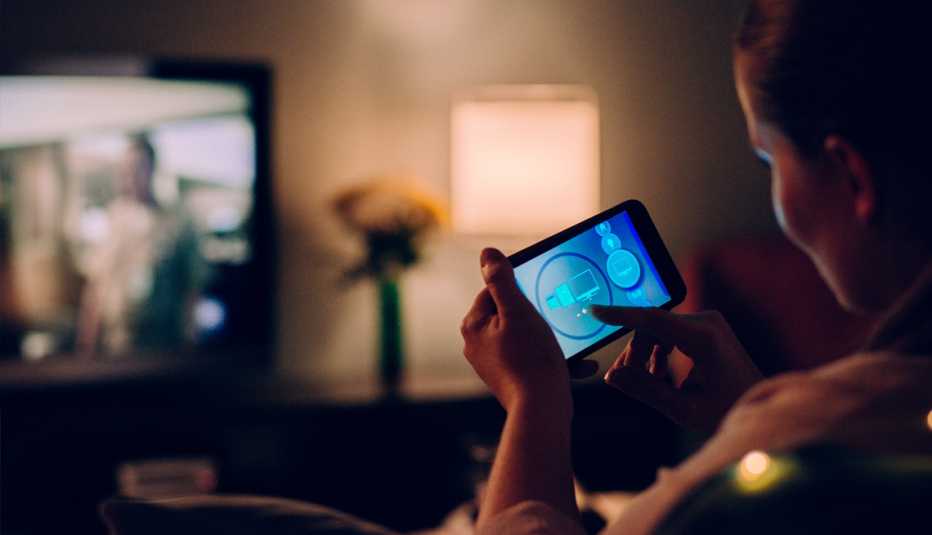AARP Hearing Center


People have all kinds of reasons to dislike remote controls: They find all of those little buttons too complicated. They can’t figure out which remote cluttering their coffee table controls the television, stereo, cable box, Blu-ray player or some other electronics.
But the best universal remote controls don’t come cheap. Any remote also seems to run out of battery power at what seems like the most inopportune times, like just before you’re about to switch the channel to the big game or the cliffhanger reveal of a favorite series. Sometimes remotes go missing under a couch cushion or reappear in another room.
One device you probably keep in your pocket or purse can substitute for your physical remote control, though apps on your iPhone or Android handset may not address all of your frustrations. You might even repurpose a retired smartphone for the job.
But a smartphone turned remote control is potentially so much more than a channel clicker. Beyond news and entertainment, the phone remote is a bridge to the internet-connected smart home, either through its built-in capabilities or when you download third-party apps.
By tapping the phone or summoning such voice assistants as Amazon Alexa, Apple’s Siri, Google Assistant or even Samsung’s Bixby, you can remotely turn on lights, lower the blinds, open garage doors, change the thermostat's temperature and control a gaggle of compatible products and appliances.
One phone, but likely numerous apps
Most older adults' experience with a remote control started with a television. In the past several years, TVs have gone “smart,” which really means they’re connected to the internet and a variety of streaming channels and apps from HBO Max to Netflix. If your TV doesn’t already have such apps, you can easily add them through Amazon Fire TV, Apple TV, Google Chromecast, Roku and other set-top boxes and streaming accessories that plug into your television.
Learn more live and online
AARP’s free online classes can help you learn more about your smartphone, its capabilities and its apps.
• Senior Planet from AARP has live courses that can help you choose and use the best phone for you.
• AARP’s Virtual Community Center has a Tech Help area with interactive events that include smartphone use.
Such products typically come with remote controls. But they also have dedicated apps that can work with these devices. And for better or worse, your smartphone is usually nearby.
Phillip Swann, editor and publisher of the TV Answer Man! website, says he has received questions from older adults “who have lost their Roku remotes and are clueless what to do. I usually refer them to the Roku app. [It] enables you to search for channels, connect headphones, turn up the volume, pause and do everything else that the physical remote does. And best of all, it’s free.”
Numerous other TV apps are available in both the Google Play Store and Apple App Store, some free and ad-supported, plus others that carry a fee. Some cater to a particular brand or set of devices, while others promise to work across brands.

































































More on home-family
19 Things You Didn't Think Your Smartphone Could Do
'Swiss Army knife' of technology offers all kinds of help
6 Tips to Help You Organize Your Apps
Take command of the digital clutter on your smartphoneMore and More, Your Smartphone Is Replacing Your Wallet
Make mobile payments and, soon, store your driver’s license